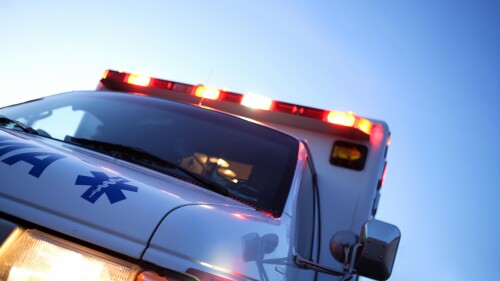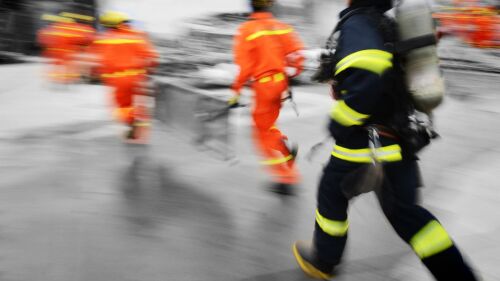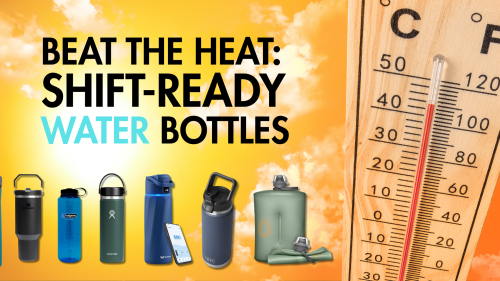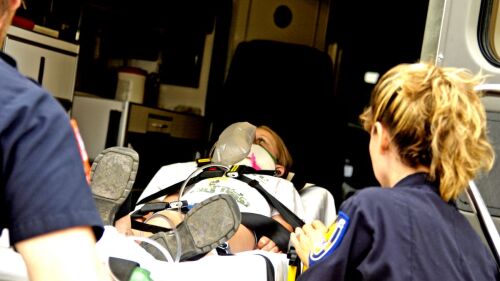BREAKING NEWS
Athens Fire and Rescue will equip additional trucks with AEDs using opioid settlement funds while the police department begins placing them in patrol vehicles
Town officials say insurance reimbursements will exceed operating costs under Tonawanda’s scaled-back municipal ambulance program
The new station at OhioHealth Van Wert Hospital is aimed at speeding access to high-acuity and specialized care
Tunnel to Towers pays off mortgage for family of fallen Burnsville Firefighter/Paramedic Adam Finseth killed in 2024 ambush
Twelve psychiatric beds will reopen as part of Denver Health’s new Integrated Medical and Psychiatric Care Unit
EXCLUSIVES
SPECIAL REPORTS
UPCOMING & ON-DEMAND EVENTS
New insight into the latest technology
Addressing the hidden dangers of cardiovascular disease
Prepare for the impact of extreme weather on critical infrastructure and EMS operations
Creating, developing and sustaining your own program, step by step
Expert perspectives on improving patient outcomes
Learn from a real-world use case of the rescue strike team and the three phases of deployment
Janet Taylor shares assessment and management tips for mastering seizure thresholds, classification and treatment approaches
What if scheduling and finalizing a transport could be done in 60 seconds?
Learn common triggers, assessment findings, and the different phases and classifications of seizures
Key findings from the Verizon Frontline Public Safety Communications survey
A detailed look at the actions leaders can take to implement a systems-level plan to protect their members
Adopting programs to improve EMS service delivery and agency culture
INDUSTRY INSIGHTS
A webinar reviews key cases where the ‘most important vital sign’ helped shape care
It starts with sharpening decision-making skills
Protecting providers starts with a glove that won’t easily fail
Small changes to how EMS approaches airway management and ventilation can make big differences in OHCA outcomes
Avon Protection showcases the effectiveness and durability of its latest scalable protective system, designed for eye, nose and mouth protection in real-world conditions
OFF DUTY
Discover how providers can improve sleep and fight fatigue with simple changes like air filters, blackout curtains and humidity control
True-to-life emergency response finally gets the Hollywood treatment it deserves
Dive into a curated collection of must-read public safety books, from thrilling accounts and leadership lessons from the front lines, to read-aloud children’s favorites
Books
Explore the books EMS leaders, EMS1 contributors and experts recommend to advance your career, build leadership skills and inspire the next generation
How new federal tax rules could affect your paycheck, deductions and long-term savings
From paddleboarding and kayaking to fishing in remote areas, discover the gear, training and self-defense strategies outdoor enthusiasts need to stay safe on the water
Insulated, smart, and high-capacity bottles designed to help first responders beat dehydration on shift and beyond
What they’ll never tell you about why we stay
I lived to retire from the ambulance company
PRODUCT RESEARCH CATEGORIES
The EMS1 Patient Handling product category features products and information for researching EMS patient handling equipment, including stretchers, stair chairs, immobilization equipment, infection control and other tools for successful patient handling, lifting and moving.
The EMS1 Specialty Vehicles product category features products and information covering a variety of vehicles, including ambulances and command vehicles.
The EMS1 Ambulance Safety product category is a collection of information, product listings and resources for researching Ambulance Safety solutions.
The EMS1 Fleet Management product category features information and resources for researching EMS Fleet Management and Ambulance Fleet Management products and programs.
The EMS1 Communications Interoperability product category features products and information for researching Communications Interoperability solutions, including interfaces, P25 radios and other mobile and stationary technologies.
The EMS1 AEDs Automated External Defibrillators product category features information and product listings for researching AEDs, including defibrillators and data management solutions related to cardiac resuscitation..
The EMS1 EMS Automated CPR product category is a collection of products and information for researching Automated Cardiopulmonary Resuscitation (CPR) products. It covers a variety of Automated External Defibrillators (AEDs), training tools and other resuscitation products.
The EMS1 Defibrillators and Monitors product category is a collection of information, product listings, and resources for researching Defibrillators and Monitors used by EMS personnel to aid in their assessment and treatment of patients.
The EMS1 Capnography product category features products and information for researching capnography’s use by EMS personnel to aid in their assessment and treatment of patients in the prehospital environment. Click here to download a guide to normal/abnormal capnography waveforms.
The Software product category features information, product listings and resources for researching EMS software solutions and covers a variety of software products such as billing, field data and scheduling software, as well as computer-aided dispatch (CAD) and electronic patient care reporting (ePCR).


















































